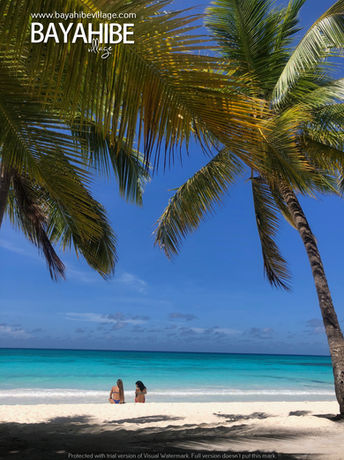Get in touch with us at info@new.com
Soana Island
South-east of the Dominican Republic is Saona, "The Beautiful Savonese" in the Antilles. It's in La Altagracia's Cotubanamà National Park, named after the island's indigenous chief.
The WWF protected the island in 1975 for its beauty and as the most significant national nesting location for Caribbean sea turtles. This 110km² area measures 22km long and 5km wide at its widest portion.
Since 2000 BC, the island has been inhabited, but the Taino settled about 800 BC. Haitian Taino people conquered most Caribbean islands in pre-Columbian times. Tainos called the island Adamanay and ruled it until Columbus. Columbus and his 98 men reached the island on September 14, 1494, in the caravels Nina, San Juan, and Cordera.
Columbus christened the island Saona. Two people disagree about his name. The first suggests that Columbus would have offered his buddy Michele da Cuneo credit for discovering the island and appointed him governor by naming it after his hometown. The other possibility is that Columbus' last non-saint-related toponym, Saona, comes from the Admiral's penultimate Italian city, Savona. Columbus may have left his family there when he moved.
Most of Soana Island's 450 residents live in Mano Juan. The population survives on fishing and selling goods to tourists that visit the island on scheduled tours. Canto de La Playa, Mano Juan, and Punta Catuano are famous beaches. In addition to being the lone village, Mano Juan has a sea turtle reproduction center. Almost "sacred" place to store turtle eggs till hatching.Saona is still a tropical paradise with white beaches, blue ocean, and seaside coconut palms. The vegetation hosts, and the island's only hotel has a few rooms for romantic sunset walks.
Motorboats or catamarans can reach Saona in 1.5 hours from Bayahibe. The Island can be visited alone or on an organized tour. Our organized tours leave Bayahibe and sail for an hour and a half to Canto de la Playa, a virgin beach with only Dr. Gonzalvo's residence. Only the doctor's house was spared once Saona was declared a protected natural area.
After a few hours of relaxation at Canto de la Playa, we will go to Mano Juan for lunch and to see the islanders' daily lives. The natural pools, a huge sandy region with shallow water half a kilometer from the shore in front of Palmilla beach, will be the last stop. Starfish, formerly abundant, are now few or gone due to poorly informed mass tourism.
Due to its wilderness, Saona Island draws more people than any other natural park. Bounty Chocolate bars have also used Saona Island for advertising. Ancient connections between Saona and Savona are intriguing. For this solidarity, the Savona residents gave them the island's main generator.
Saona Island: Palmilla Beach
Palmilla Beach, located southeast of East National Park in La Romana, Dominican Republic, is the perfect place to let yourself go on vacation.
The beach is framed by a beautiful tropical forest, giving visitors the picture-perfect tropical paradise they seek when they visit the Dominican Republic. Being inaccessible by land also prevents hundreds of visitors from flooding this beautiful beach, making it one of the most peaceful spots in the region.
Since this secluded beach is part of the national park's protected region, the only building there is a palm bungalow. Travelers seeking a tranquil beach day of sunbathing, swimming, scuba diving, or just walking on its powdery white sand often make it their destination.
Because there is no land access, the only way to get there is by boat from either Bayahibe or La Romana. Situated near Saona Island, this picturesque spot is encircled by the East National Park and rarely visited yet well worth a visit.

















